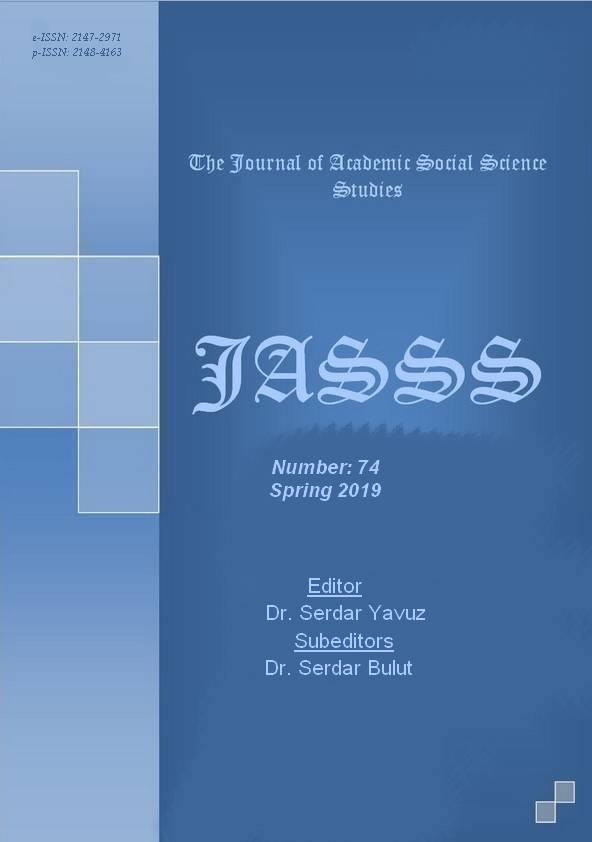Author :
Abstract
XIII. yüzyıldan sonra Türk yazı dili, Batı ve Kuzey-Doğu olmak üzere ikiye ayrılmış ve XIX. yüzyıla kadar da bu şekilde gelişmiştir. Kuzey-Doğu Türkçesi ise XV. Yüzyıldan itibaren Kuzey ve Doğu Türkçesi olarak ikiye ayrılmıştır. Doğu Türkçesini Çağatyaca oluşturmaktadır. Bugün kullanılan Yeni Uygur Türkçesi ve Özbek Türkçesi Çağataycanın devamıdır. Uygur Türkleri, 1930’lu yıllara kadar edebî dil olarak Çağatay Türkçesini kullanmıştır. Bu tarihten sonra Ürimçi (Urumçi) ağzını merkez kabul eden Kâşgar, Aksu, Kumul, Turfan ve İli vilâyetlerinin ağızlarıyla birlikte Uygur Türklerinin tamamına yakınının dilini içine alan “merkezî şive”yi edebî dil haline getirmişlerdir. Türkçe varolduğu andan günümüze kadar pek çok alanda eserler vermiştir. Türkçenin eserlerinden biri de dini metinlerdir. Dini metinler, dillerin kelime hazinelerine yenilerini katmaları ve bu yolla kelime hazinelerini zenginleştirmeleri bakımından çok önemlidir. Çünkü bu tür metinler bir dil için yeni kavramlar demektir. Dini metinler içinde en değerli olanı Kur’an-ı Kerim’dir. Kur’an-ı Kerim, 11. yy’dan beri Türkçeye tercüme edilmektedir. Bu tercümeler sayesinde yüzlerce dini terim dilimize kazandırılmıştır. İlk tercümelerde dini terimlerin daha çok Türkçe karşılıkları verilmeye çalışılırken son dönem tercümelerde terimlerin ya Arapçasının ya da Farsça karşılığının tercih edildiği görünmektedir. Bu çalışmadaki amaç, dini terimlerin bazılarının Yeni Uygurca tercümede ne kadarının Yeni Uygurca ne kadarının Arapça veya Farsça olduğunu belirlemektir. Çalışmada esas alınan Yeni Uygurca tercüme, Muhammet Salih tarafından Arabistan kralı Fahd bin Abdu’l- caziz al Suud’un isteği üzerine 1992 yılında yapılmıştır. Kur’an-ı Kerim’de gerek soyut gerekse somut olarak pek çok konu işlenmiştir. Bu konuların tamamının incelenmesi çok geniş yer tutacağından mevcut çalışmada kısıtlama yapılmıştır. Bu çalışmada, Muhammet Salih tarafından yapılmış olan Yeni Uygur Türkçesi Kur’an-ı Kerim tercümesinde geçen cin, şeytan, melek kavramlarının sadece isim olanları incelenmiştir. Çalışma yapılırken ilk önce cin, şeytan, melek, kavramlarının ve bunların diğer isimlerinin Kur’an-ı Kerim’de geçtiği yerler ayet ayet tespit edilmiştir. Daha sonra bu kavramların Yeni Uygur Türkçesi Kur’an-ı Kerim tercümesindeki karşılıkları ve anlamları yazılmıştır. Ayrıca terimin ilk geçtiği ayet de örnek olarak gösterilmiştir. Çalışmanın sonunda tespit edilen terimlerin ne kadarının Yeni Uygurca ne kadarının Arapça ve ne kadarının Farsça olduğu sayısal değerlerle belirtilmiştir.
Keywords
Abstract
Turkish written language divided into two groups as West and North-East after the 13th century, and it developed in this way until the 19th century. North-East Turkish also divided into two different groups as North and East Turkish after 15th century. Eastern Turkish is formed by Chagatai language. Modern Uyghur Turkish and Uzbek Turkish used today are the continuation of Chagatai. Uyghur Turks used Chagatai Turkish as the literary language until the 1930s. After this date, the ‘central dialect’ that included almost all the languages of the Uyghur Turks along with the dialects of Kashgar, Aksu, Kumrul, Turfan and Ili provinces which accepted the Urumqi (Ürimçi) dialect as the central one was turned into the literary language. Several works have been produced in many fields from the moment of the first appearance of Turkish to the present. One of the works of Turkish language is religious texts. Religious texts are very important in terms of adding new items to the vocabulary of the languages and thus enriching the vocabulary because such texts mean new concepts for a language. The most valuable of the religious texts is the Quran. The Quran has been translated into Turkish since the 11th century. Thanks to these translations, hundreds of religious terms have been added to Turkish. While Turkish equivalents of religious terms were attempted to be used in the first translations, it is seen that the Arabic or Persian equivalents of the terms have been preferred in the recent translations. The aim of this study is to determine how many of the religious terms in the Modern Uyghur translation of the Quran are in Modern Uyghur and how many in Arabic or Persian. The Modern Uyghur translation that is used in this study was made by Muhammed Salih in 1992 upon the request of Fahd bin Abdul-Aziz Al Saud, the king of Arabia. In Quran, many subjects have been dealt with in both abstract and concrete forms. Since the examination of all of these issues will take a very large part, the present study has been limited. In this study, only the noun forms of genie, demon and angel concepts which are mentioned in Modern Uyghur Turkish translation of the Quran by Muhammed Salih were examined. First, the places where the concepts of genie, devil and angel and the other names of these were mentioned in the Quran were located verse by verse. Then, the equivalents and meanings of these concepts in the Modern Uyghur Turkish translation of the Quran were written. In addition, the first verse where the term was mentioned is shown as an example. At the end, how much of the identified terms is in Modern Uyghur and how much in Arabic or Persian are indicated by numerical values.





